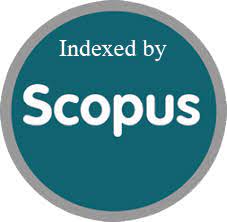Outsmarting Cyber squatters: The Role of AI in Domain Name Protection
DOI:
https://doi.org/10.52783/jns.v14.3869Keywords:
Cybersquatting, Domain Name Protection, Artificial Intelligence (AI), Machine Learning, Natural Language Processing (NLP), Computer Vision, Trademark Infringement, Brand Protection, Domain Name System (DNS), Uniform Domain Name Dispute Resolution PolicyAbstract
Cybersquatting, the practice of registering domain names identical or similar to trademarks with the intent to profit, poses a significant threat to businesses and individuals alike. Traditional methods of combating cybersquatting often prove insufficient in the face of evolving tactics employed by malicious actors. This research investigates the potential of artificial intelligence (AI) in revolutionizing domain name protection. By leveraging advanced machine learning algorithms and natural language processing techniques, AI-powered systems can effectively identify and mitigate cybersquatting attempts. This paper delves into the application of AI in various aspects of domain name protection, including early detection of potential cybersquatting, automated dispute resolution, and real-time monitoring of the domain name market. Through a comprehensive analysis of existing AI-based solutions and future research directions, this study aims to contribute to the development of robust and innovative strategies for safeguarding digital assets in the era of AI.
Downloads
Metrics
References
AI in decision making: transforming business strategies Kaggwa, S., Eleogu, T. F., Okonkwo, F., Farayola, O. A., Uwaoma, P. U., & Akinoso, A. (2024). AI in decision making: transforming business strategies. International Journal of Research and ScientificInnovation10(12), 423-444.
Strategic Insights in a Data-Driven Era: Maximizing Business Potential with Analytics andAI Moinuddin, M., Usman, M., & Khan, R. (2024). Strategic Insights in a Data-Driven Era: Maximizing Business Potential with Analytics and AI. Revista Espanola de Documentacion Cientifica,18(02),125-149.
AI-Powered Innovation in Digital Transformation: Key Pillars and Industry Impact Aldoseri, A., Al-Khalifa, K. N., & Hamouda, A. M. (2024). AI-Powered Innovation in Digital Transformation: Key Pillars and Industry Impact. Sustainability, 16(5), 1790.
Unleashing the potential of AI: Investigating cutting-edge technologies that are transforming businesses Allioui, H., & Mourdi, Y. (2023). Unleashing the potential of AI: Investigating cutting-edge technologies that are transforming businesses. International Journal of Computer Engineering and Data Science (IJCEDS), 3(2), 1-12.
AI transforming business and everyday life Bialkova, S. (2024). AI transforming business and everyday life. In The rise of AI user applications: Chatbots integration foundations and trends (pp. 143-165). Cham: Springer Nature Switzerland.
The blended future of automation and AI: Examining some long-term societal and ethical impact features Khogali, H. O., & Mekid, S. (2023). The blended future of automation and AI: Examining some long-term societal and ethical impact features. Technology in Society, 73, 102232.
1AI: The future of humanity Rawas, S. (2024). AI: The future of humanity. Discover Artificial Intelligence, 4(1), 25.
Deep Learning Applications in Big Data: Expanding Horizons with AI-Driven
Peyron R, Laurent B, García-Larrea L. Functional imaging of brain responses to pain. A review and meta-analysis. Neurophysiol Clin. 2000;30(5):263–288. doi:10.1016/S0987-7053(00)00227-6
Sheldon, K. M., Ryan, R. M., Rawsthorne, L. J., & Ilardi, B. (1997). Trait self and true self: Cross-role variation in the big-five personality traits and its relations with psychological authenticity and subjective well-being. Journal of Personality and Social Psychology, 73(6), 1380–1393. doi:10.1037/0022- 3514.73.6.1380
Stanford, R.G. and C. R. Lovin (1970), "The EEG alpha rhythm and ESP performances": Journal of the American Society for Psychical Research, 64:4.
Kroger, W. S., & Fezler, W. D. (1976). Hypnosis and behaviour modification: Imagery conditioning. Philadelphia: J. B. Lippincott.
George, G., Osinga, E. C., Lavie, D., & Scott, B. A. 2016. Big data and data science methods for management research. Academy of Management Journal, 59(5): 1493–1507
Downloads
Published
How to Cite
Issue
Section
License

This work is licensed under a Creative Commons Attribution 4.0 International License.
You are free to:
- Share — copy and redistribute the material in any medium or format
- Adapt — remix, transform, and build upon the material for any purpose, even commercially.
Terms:
- Attribution — You must give appropriate credit, provide a link to the license, and indicate if changes were made. You may do so in any reasonable manner, but not in any way that suggests the licensor endorses you or your use.
- No additional restrictions — You may not apply legal terms or technological measures that legally restrict others from doing anything the license permits.










